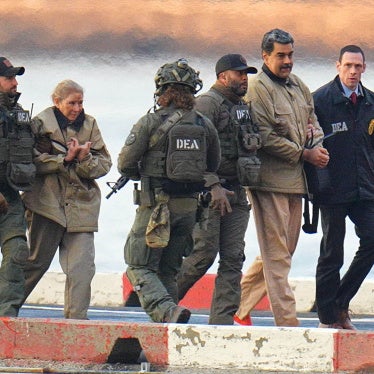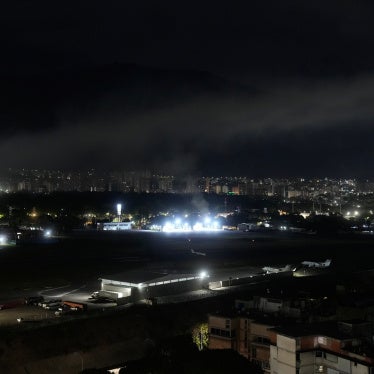After Mexico City police officers detained 17-year-old Marco Antonio Sánchez on January 23, his family couldn’t get information about his whereabouts for several days. Many Mexicans immediately assumed the worst—that authorities had “disappeared” him. As far-fetched as that may sound in a region where most people think of enforced disappearances as a practice of past dictatorships, it’s actually a reasonable assumption in Mexico today.
Police detained Marco Antonio near a city bus stop where he was taking pictures of graffiti, a friend who was with him said. The officers accused Marco Antonio of attempted robbery, beat him, handcuffed him, and drove him away in an official vehicle, local media reported.
On January 26, after the media reports came out, the Mexico City Public Security Ministry said it was working to find the “missing young man.” It eventually announced that four policemen implicated in Marco Antonio’s disappearance had been identified and that two of them were under arrest “for not having observed some protocols.” The officers claimed that they let Marco Antonio go soon after they detained him, but Mexican authorities have failed to show official records of the detention or the release.
The mystery lasted several days, during which the United Nations High Commissioner’s Office in Mexico called on authorities to investigate the case as a possible enforced disappearance—that is, one involving state agents.
Finally, on January 27, Marco Antonio was presented before a judge in a courthouse in the town of Tlalnepantla, Mexico state, not far from the bus stop where he had been detained. Municipal police said that earlier that day they had found Marco Antonio wandering on a bridge, disoriented, and detained him fearing he would commit suicide. The judge released Marco Antonio, the press reported. He was found the following evening wearing different clothing, about 20 kilometers from the courthouse. It is still unclear what exactly happened to him between his arrest and the moment when he was found.
Marco Antonio and his family were relatively lucky. If prosecutors carry out a prompt, thorough, and impartial investigation, we may even find out what happened to him during those five days. On February 5, the Mexico City attorney general said four police officers had been charged, and published videos from the day of his detention.
In contrast, the government reported in November that more than 34,000 people have been reported missing since 2006—when former President Felipe Calderón began his “war on drugs”—and their whereabouts still remain unknown.
The government’s registry of the missing, though imperfect, is the only official source of data regarding the scope of disappearances in Mexico. The lack of adequate investigations makes it impossible to know exactly how many of these cases were enforced disappearances, in which security forces are directly or indirectly implicated, or how many are linked to organized crime. Regardless, each case is an excruciating nightmare for families and friends, who may imagine the worst—and who cannot hold a funeral or otherwise achieve closure.
Mexican prosecutors and police routinely fail to take basic investigative steps to identify those responsible for disappearances in which security forces are involved. They often tell the families to investigate on their own. And they have routinely failed to find missing people or to identify the remains of bodies or body parts found throughout the country, including in clandestine graves. According to the National Human Rights Commission, 855 clandestine graves were found in Mexico between 2007 and 2016, and only 796 of the 1,548 bodies found in them have been identified. Impunity for these cases is the rule.
This has happened even in the most paradigmatic disappearance case in recent years. Despite widespread international scrutiny, only one of the 43 students from a teachers college in Ayotzinapa who were disappeared in 2014 has been positively identified among remains that the government says are those of the students. The initial investigation into the crime was marred by irregularities, including torture of witnesses. Dozens of people have been charged with alleged involvement in the abductions, but prosecutors have not brought charges against state or federal authorities nor against members of the armed forces, although there are indications of their involvement.
The Mexican government is scheduled to present a report to the United Nations on February 13, on how it is living up to its obligations under the Convention for the Protection of all Persons from Enforced Disappearances. It will probably highlight that a new law on disappearances, which recently entered into force after a long delay, sets the right legal framework to move forward with government policies to clean up the official registry of missing people, search for the disappeared, and bring those responsible to justice.
The law is, undoubtedly, a positive step that could contribute to solving the problem—but only if it is adequately implemented. Mexico is full of excellent laws that do not deliver meaningful results. The Mexican government’s challenge today is not only to explain what it is doing and planning to do, but also to disclose a transparent and candid assessment of its results, including how many people responsible for disappearances—and enforced disappearances—have been held accountable for their crimes.








